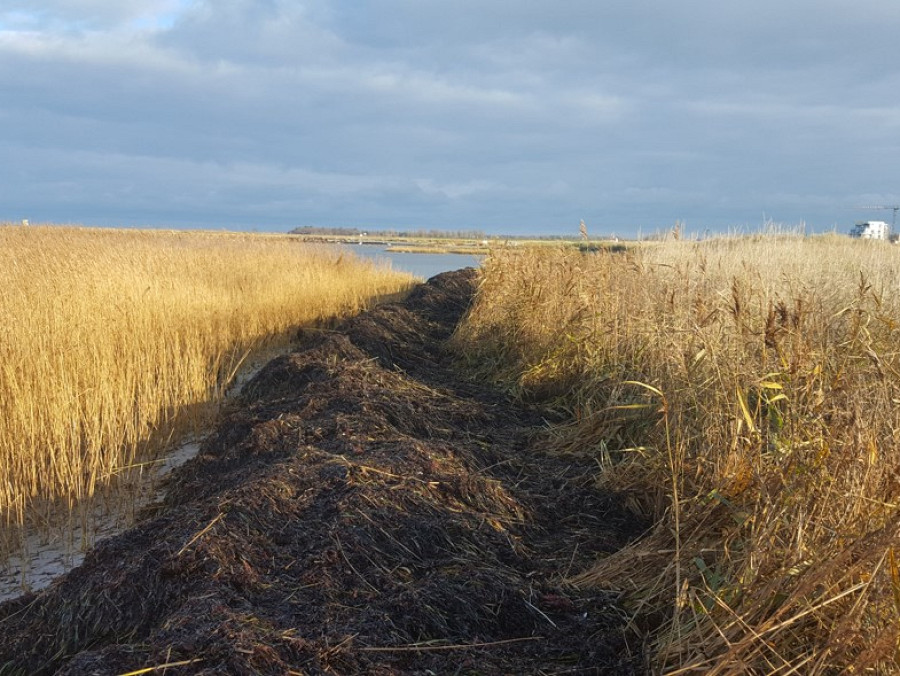Beach wrack transport in coastal wetlands
18.08.2022

How is beach wrack transported and deposited in coastal wetlands during storms? This has now been precisely measured for the first time at a Baltic study site after several winter storms. The results showed that most of the material was deposited along footpaths within the coastal vegetation. Insights into transport patterns and behavior during extreme events are relevant for implementing nature-based solutions (e.g.. beach wrack dunes) in a site-adapted and efficient manner.
Coastal wetlands are multifunctional systems – they provide various habitats, sequester carbon, dissipate wave energy and buffer nutrients. Reciprocal matter exchange and interactions between submerged and emerged vegetation in these systems need more attention. Our new publication is a step in this direction and investigates beach wrack transport in a Baltic coastal wetland.
Beach wrack, composed of seagrass and algae washed onshore, can serve as an important nutrient source, increases surface roughness, elevates the backshore and influences the blue carbon budget. Beach wrack monitoring was conducted in high spatial and temporal resolution with bi-weekly UAV flights during the winter storm season 2021/2022. Three major storm events occurred during the monitoring period (Arwen, Malik, Eunice). Regardless of wind speed or direction, the main accumulation zones remained stable. An east-west footpath that crosses the coastal wetland and connects the tourist hotspots served as a ‘highway’ for water-mediated transport of beach wrack. The densely accumulated beach wrack formed an elongated micro-cliff-like structure and limited landward transport. The identified transport patterns and accumulation hotspots are a starting point for further research on how beach wrack behaves in (waterlogged) coastal wetlands compared to decomposition on sandy beaches.
Have a look at the full publication here:
http://www.frontiersin.org/articles/10.3389/fmars.2022.929274/full